Hi everybody
As stated at the beginning of this I-16 story, Nikolai Polikarpov intended from the outset to equip his fighter with the M-25 engine, licensed Wright Cyclone SGR-1820.
It is the prototype TsKB 12 that I previously presented After an accident it was remotorized with a Wright and equipped with a Watter cowling in replacement of the NACA
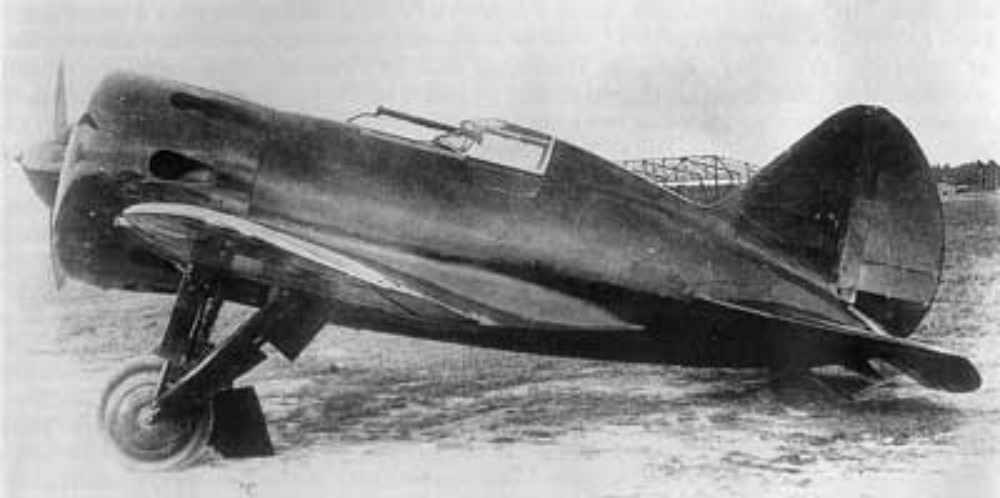
When production of M25 engines became sufficient, the first type-5 leave factory 39 in Moscow in the spring of 1935 and mass production started at the factory 21 in Nizhny Novgorod mid-35.
The first version is equipped with the same sliding canopy and the same wing as the type-4, the noticeable difference from the outside is the cowling, with pierced front plate with 9 openings closed by shutters and conical shape that joins the fuselage , the 9 exhaust pipes leaving by 8 ports which also serve to evacuate the hot air. The general shape and dimensions of type 5 will be kept up to type 29, which allows model makers to move from one type to another with more or less scratch.
In 1937, with the experience of a few months of war in Spain, the seat is provided with an armored plate, the wing is reinforced and 750x150 wheels replace the 750x100. Then the sliding canopy is replaced by a fixed windshield, the tubular gunsight OP-1 is replaced by the PAK1 collimator and the last type 5 are equipped with M 25V engine with oil cooler and therefore recognizable at the T-shaped air intake at the bottom of the cowling, similar to Types 10. In addition to the newly-produced units, those already in units benefit from these improvements. On June 22, 1941, some units are still equipped with type 5 and there are many pictures of wrecks of this type taken by the Germans. In 1942, types 5 equipped with RS 82 rocket under the wings are still in the front line as "sturmovik" (assault aircraft)
Here are the differences between these Type-5 that I will present here.
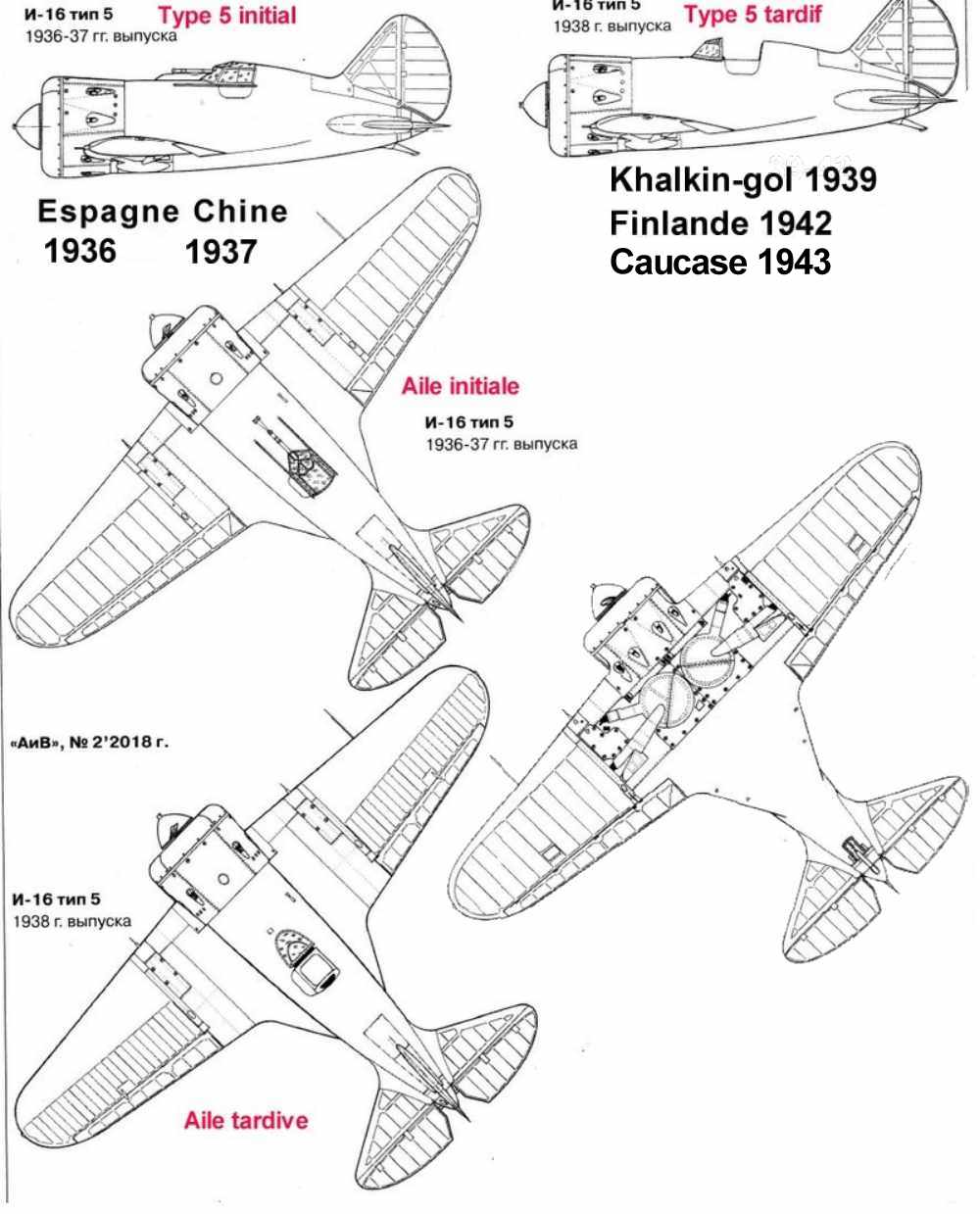 Initial version - The Spanish Civil War.
Initial version - The Spanish Civil War. In chronological order, I begin with the "Type-4" winged version, narrow wheels, closed canopy and OP-1 gunsight.
It is to this model that belong the first 31 I-16 delivered to the Spanish Republicans on November 3 and 4, 1936, accompanied by 31 Soviet pilots under the command of Captain Serguey Tharkov.
On November 3, during one of the first battles over Madrid, Tharkov crashed into an Italian plane and had to parachute. During his descent, he was hit by "friendly" shots from the ground and died a few days later in the hospital. This is his plane, coded 1 that I present .
To build it I used this kit
 was taken then it was not yet in flight state.The plastic sprues are presented in type-4 building. They have some minor flaws[Url=https://servimg.com/view/19841204/209] [img] https://i.servimg.com/u/f62/19/84/12/04/04_dyf11.jpg)
We must improve these parts before moving to the assembly
1-Exhaust Amodel gives only 8 exhausts tubes, 1 per exhaust port while there are of course 9. So we must create a double, corresponding to the upper left exhaust port.
The small pieces of plastic supposed to represent the tubes have a rectangular section. Reaming them therefore has the advantage of both the realism of the hollow and on the other hand to give them a round shape. I do this with the point of a No. 11 blade that repels the plastic and gives the round shape, not with a drill that would remove material.
 2 cowling
2 cowling An image is more meaningful than a speech
The aspect of the front flaps participating very much in the general aspect of the I-16, I bought sets of PE (ACE and Part) to represent this part, which is figured neither by Amodel nor ICM. The kits Hasegawa offers shutters in closed position.
I did resin copiess of the corrected and completed cowling for the upcoming Amodel, which will avoid me to buy as many PE as kits.
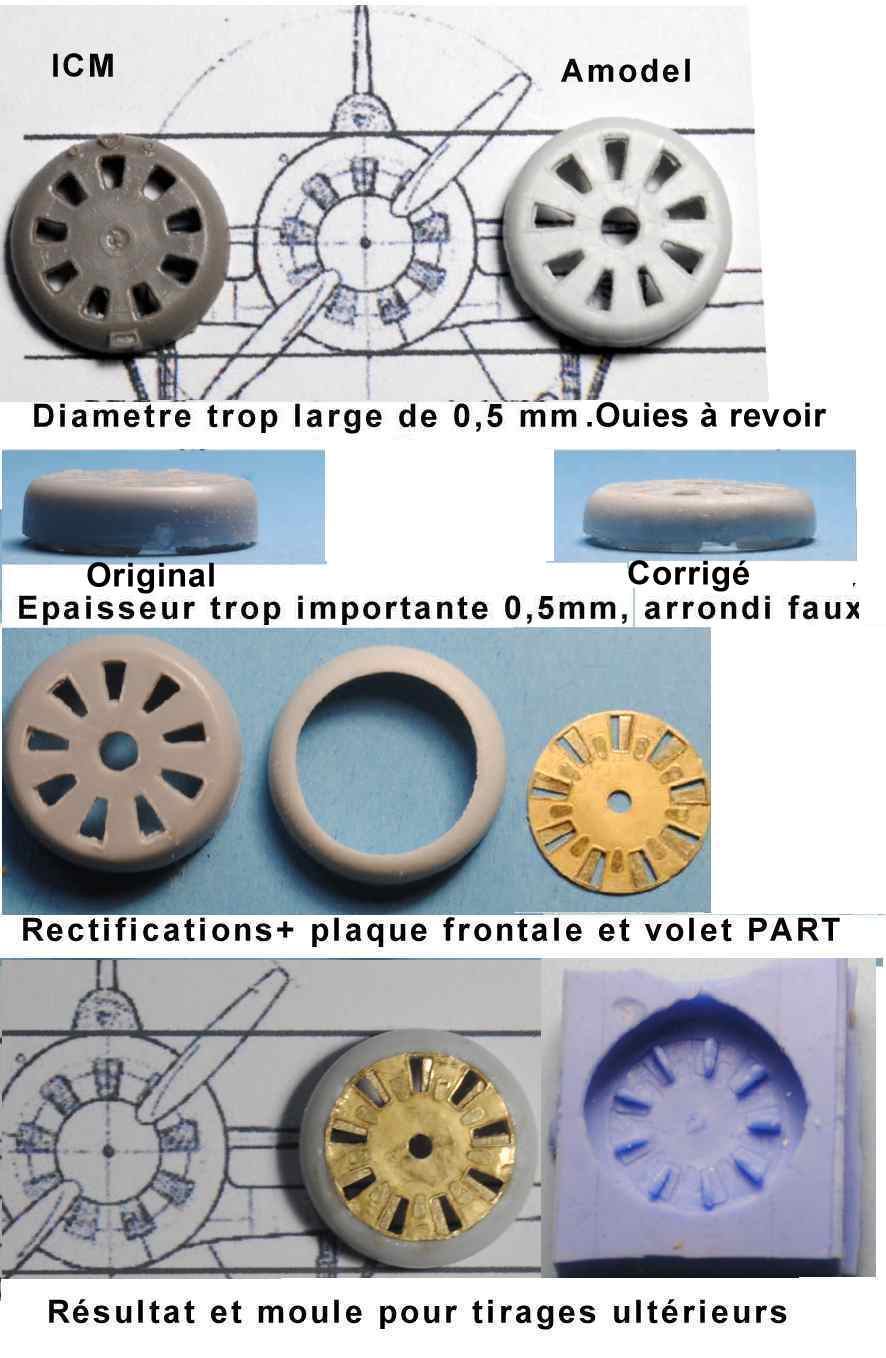 4- Head support and back fairing.
4- Head support and back fairing. This part of the kit deserves to be refined.
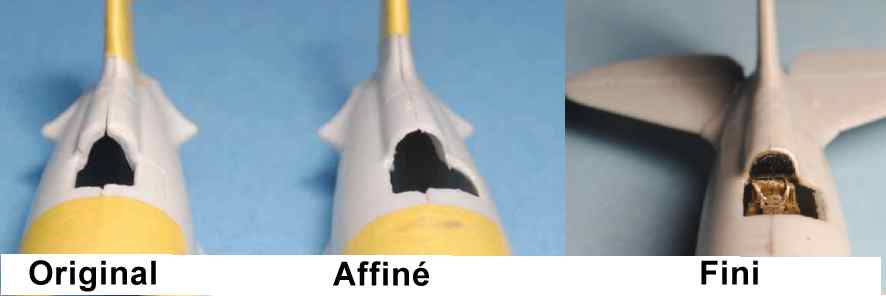 4- Wheel wells
4- Wheel wells Finally, as already noted with the type 4, wheel wells are to be completed, Thanks to the Silhouette plotter , I was able to prepare the windows with good shape, all identical and well positioned, the 2 bottoms of wells being on the same piece of plastic card
Since the ICM wells are as empty as the Amodel wells, I have prepared well bottoms for Type 5, 10 and 17 and UTI-4. From type 18, the wells are different.

.
5 "type-4" wing The version that I present here is a type-5 with the initial wings, identical to the wings of the type 4, the extrados presents ribs at the same spacing as the intrados. I took advantage of the fact that there are 2 intrados in the box of Amodel "type 6 ". Indeed, there is an additional cluster with skis, RS 82 rockets, and a lower surface designed to receive these rockets. The "standard" intrados not being useful for this 'type 6', I used it for the benefit of this type-5
I borrowed Ricardo Rodrigez the technique he used to produce the wings of transkit for type 4 :
https://www.tapatalk.com/groups/forodemodelismo/proyecto-ishak-capitulo-3-1-parte-antes-de-los-poz-t8820.html#p62625I cut from the intrados the part corresponding to the fabric covered part of the extrados. And on the extrados corresponding to a model with reinforced wings, I removed the non-compliant part after separating the ailerons
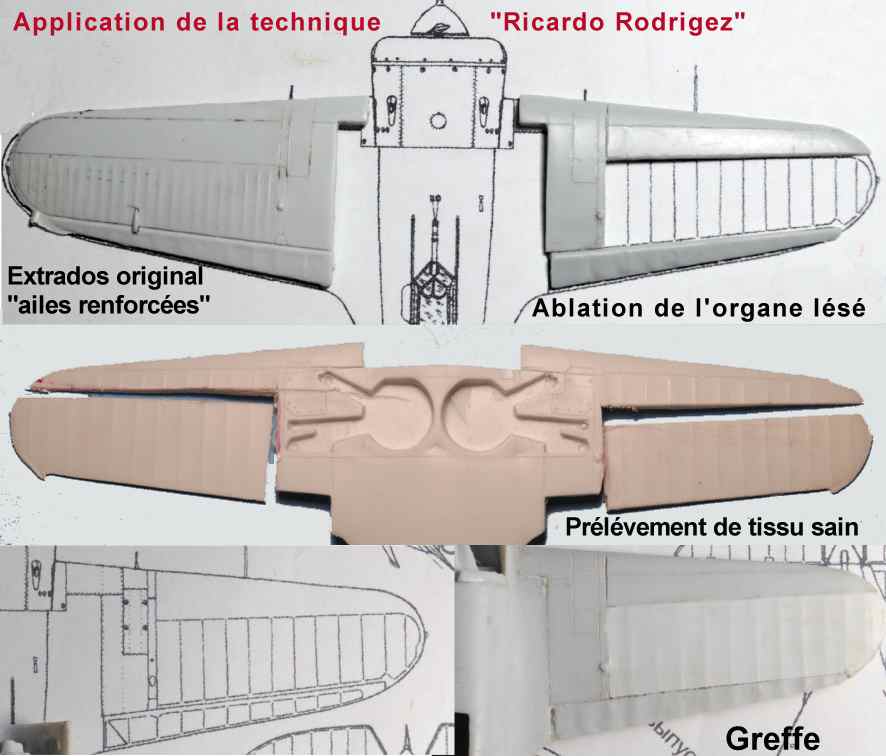
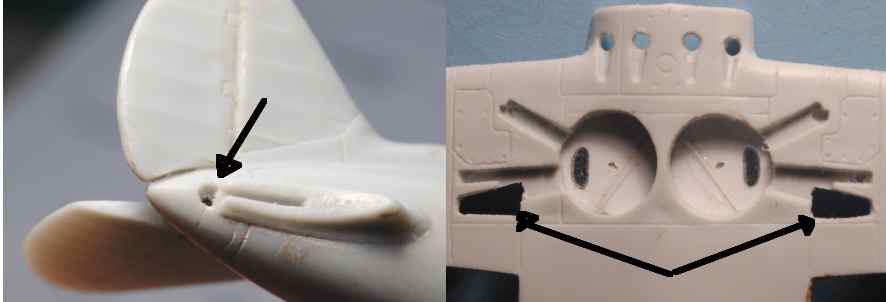 6- Cockpit.
6- Cockpit. The seat and the bottom of the fuselage are also coarse. We see almost nothing of the cockpit of an I-16 but they are the few visible elements. Here compared to the ICM kit that shows an armored seat that appeared later, so I stay at the original version, seat and headrest separated.

Next step, photoetched parts
I bought ACE and PART kits, especially to have shutters and faceplate cowlings. I know that to super-detailed cockpit on the I-16 is of little interest. Even by opening the access port.
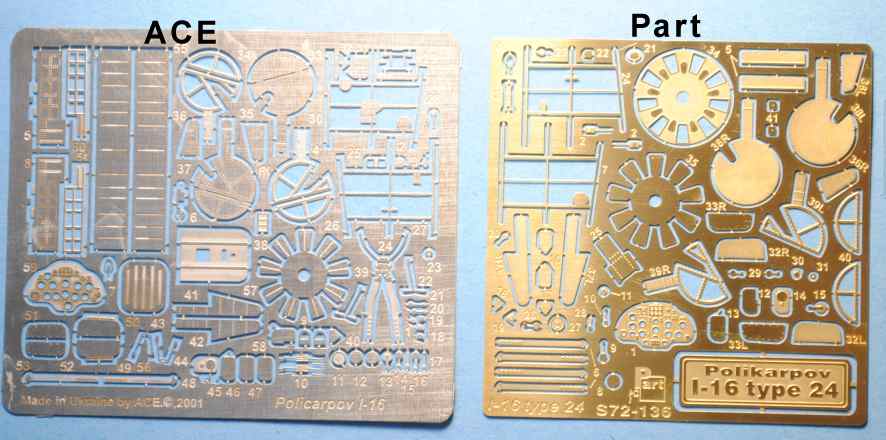
The 2 sets are slightly different and complement each other. If both have shutters, only Part also offers the front plate. The shutters alone are difficult to use. Sticking them to the inside of the kit cover is hardly realistic given the thickness of the plastic. On the other hand ACE proposes an exact harness, shutters and a support of the seat
The parts detailing the walls of the cockpit and the train are comparable.
For my use, PART is better
As I have it , I tested the complete detailing of the cockpit, it will allow me to know what is worth being mounted (and shown) on the kits to come.
I used the ACE harness, which was perfectly accurateas a template.
I used the Silhouette plotter to cut harnesses in adhesive aluminum according to the template . By painting only the canvas part, the aluminum makes it possible to have the metal loops directly. Tthe stickiness and malleability of the aluminum gives a realistic result, here on an ICM seat, with armored backrest that appeared on the type 10.
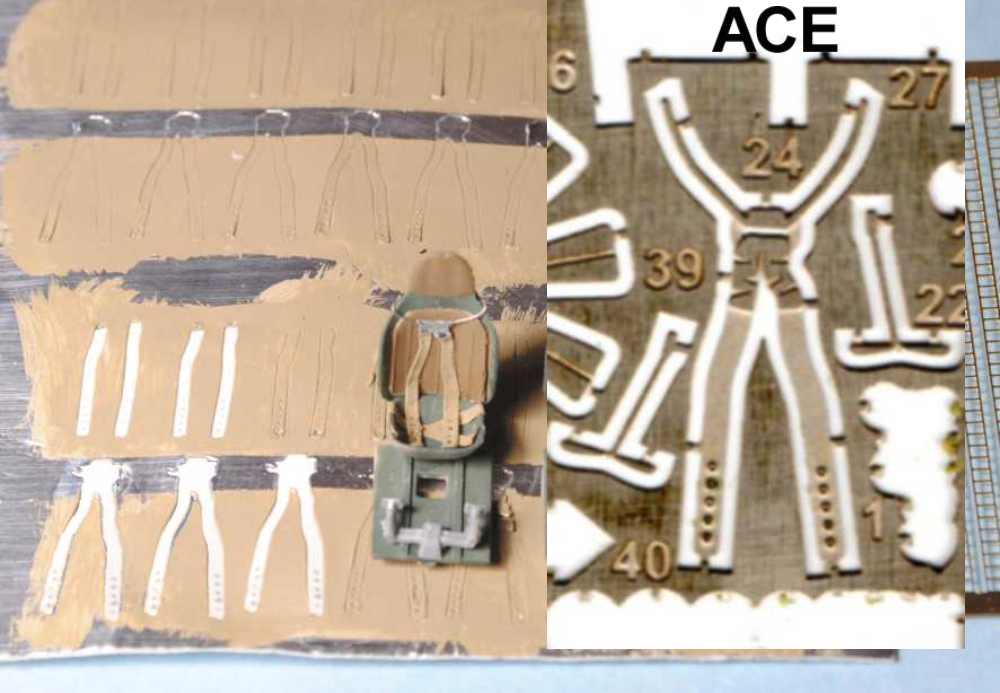
For the retraction winch of the landing gear (44 turns of crank) the 2 kits are worth in complexity, 10 pieces for an object of 4x3 mm.

Here are the elements of the walls of the cockpit
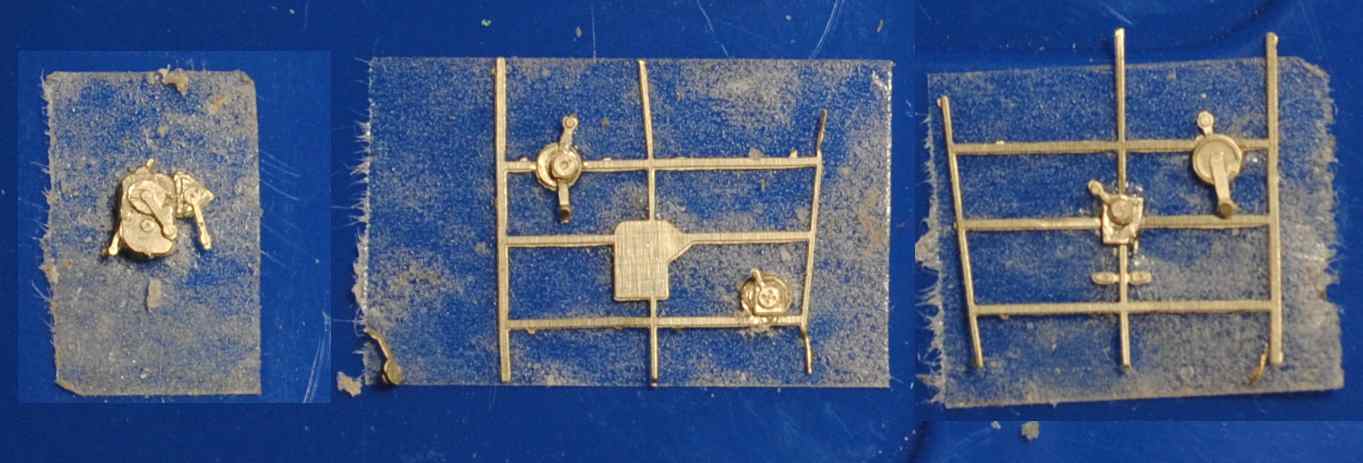
PE once stuck to the kit, the appearance lack of volume. The fuselage of the I-16 was made of wood with frames of strong section in the cockpit. The photoetching is too flat to make this look.
On the advice of ALexGRD, I did the medium gray cockpit supposed to represent the A14 hue and seat and green floor.
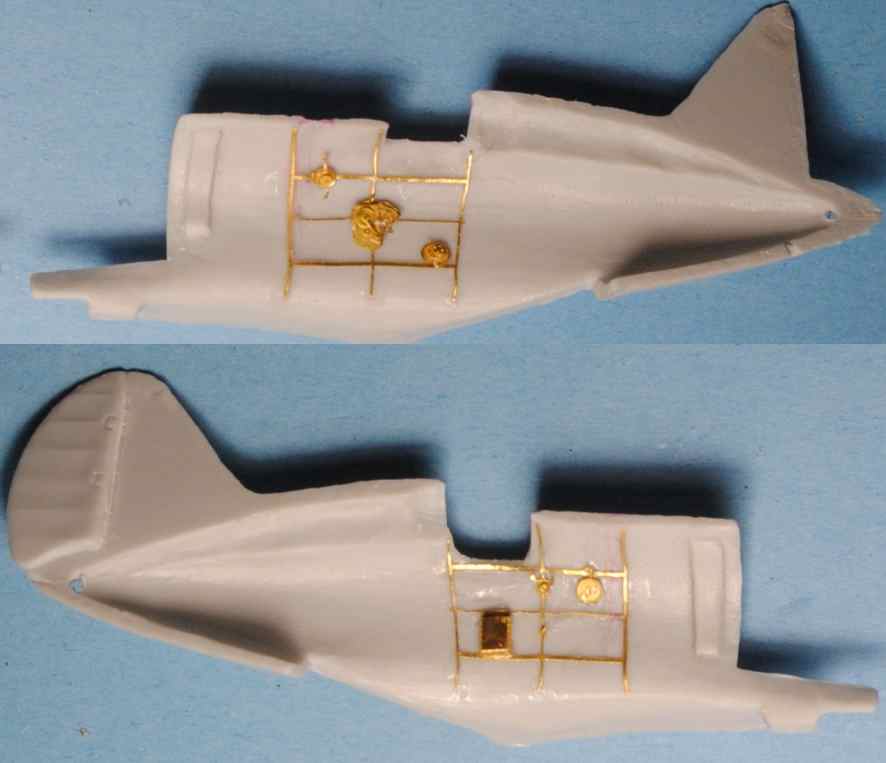
So I recovered the different boxes and represented the frames in CP. I think it is necessary to exaggerate volumes and contrast of color to hope to guess something by the opening of the cockpit.
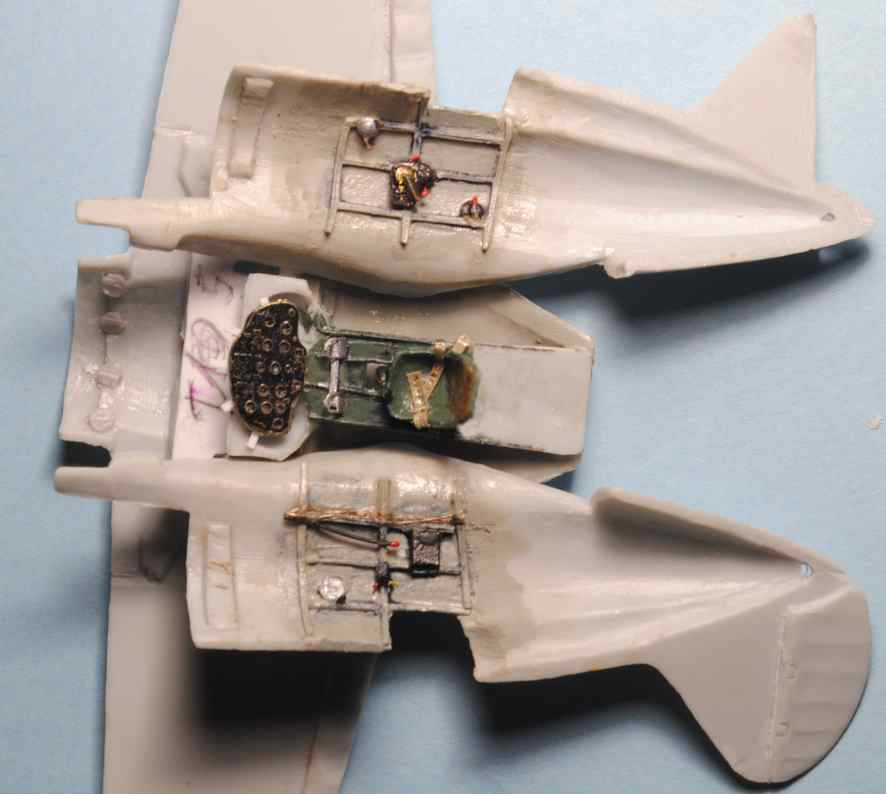
Here is the fuselage closed . We can't see the dashboard and half of the sticks. The rest can be guessed more than it can be seen, despite the open door.
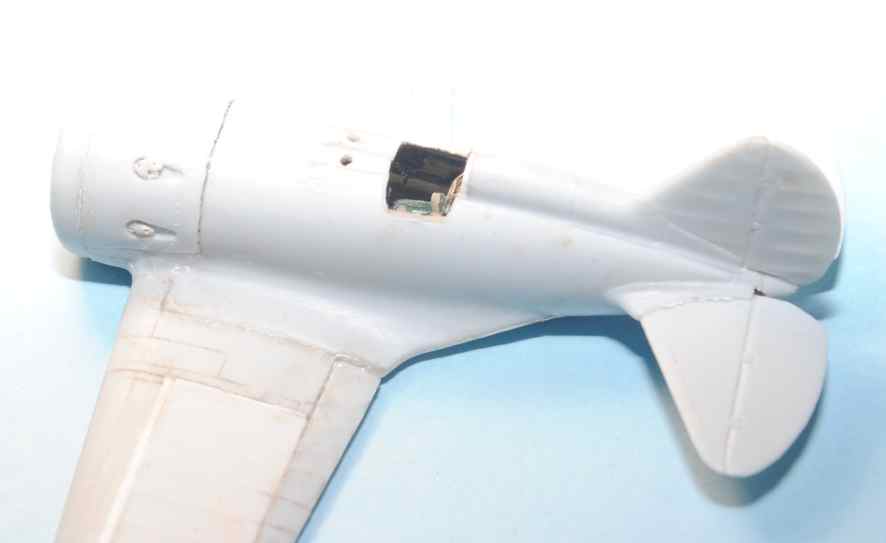
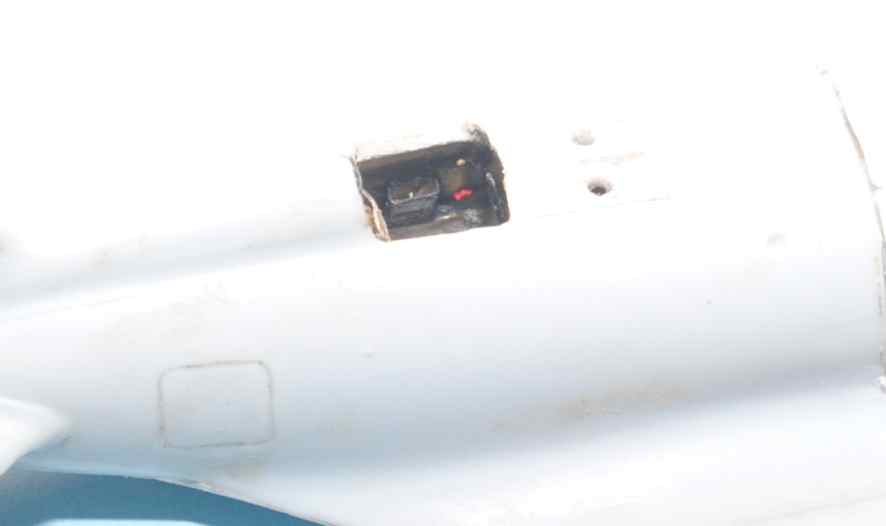
Typical details of the Ishak, besides the lighting portholes of the dashboard, 2 holes for the hands.
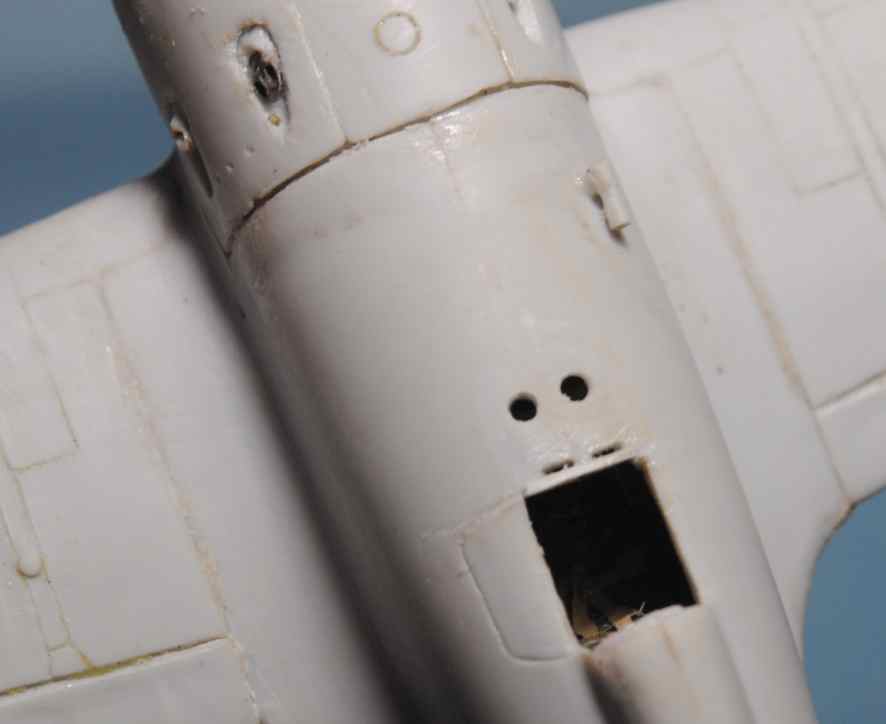 7- Assembly of the cowling
7- Assembly of the cowling The different panels are in continuity of the fuselage if we built the Amodel "from the box". To give a more realistic look, I refined the back edges of the panels and glued a thin strip of CP into the engine compartment to raise them slightly
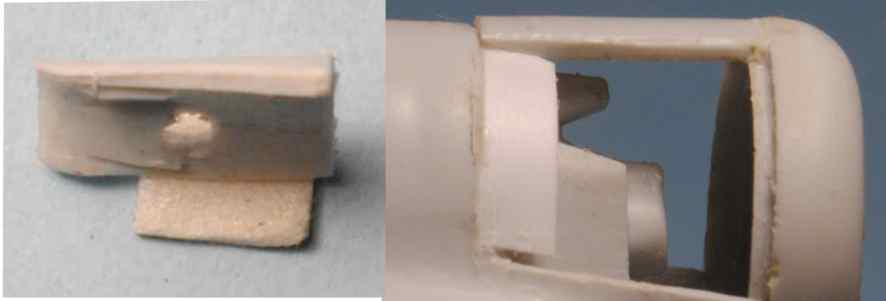 8- Landing gear and wheels
8- Landing gear and wheels As described in the type 4 assembly, the Amodel train is partially false. Only the main leg is usable .
The other struts must be made scratched and for the wheels doors, I had produced a stock in 0.1 plastic card with my silhouetteplotter
I used part of the Part photoetched to improve the wheel doors

As I make an initial type 5 with wheels of 700x100, as for type-4 and UTI-2 I saw ICM wheels which represent 700x150. The kerf has decreased enough thickness to get the right dimension
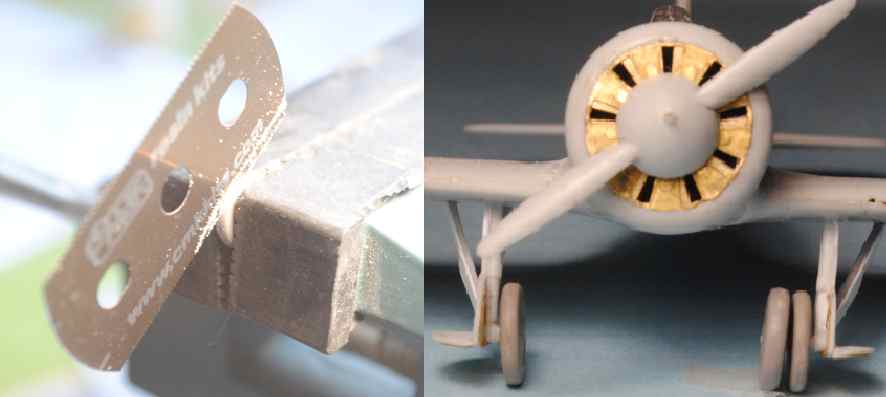
And the initial type 5 before the painting workshop.
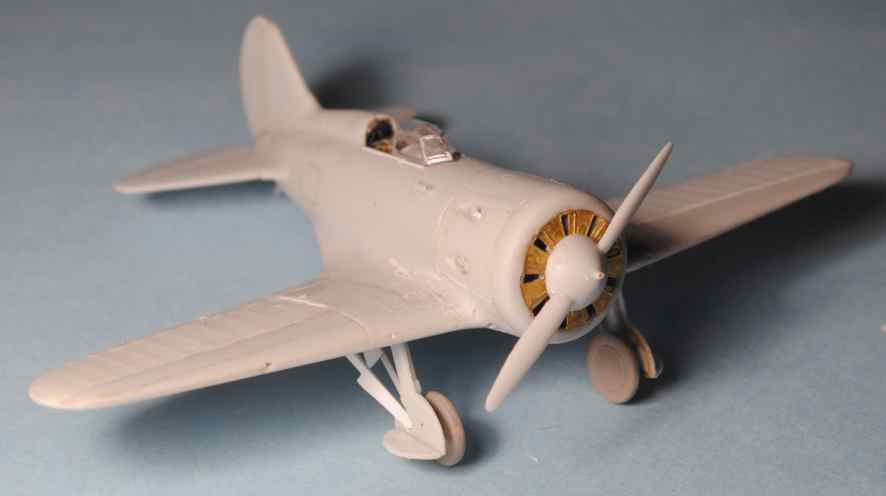
As for Type-4 and UTI-2 the decoration is black cowling, green kakhi top "Zashchitnyi" Humbrol 86 for me, and light blue under (H65).
Front of the blades aluminium and pilot side, black.
The rudder flag is a decal of the Amodel box, good quality. I added the 1with a stencil made with the Silhouette.
Wing and fuselage band Humbrol 60.
Retraction cables of the fishing line 0.05.
Metal strip on cowling;: aluminum adhesive
Pitot and machine guns hypodermic needles
The type-5 kits that I have seen have sometimes black wheels, but the landing gear and wheels doors are generally painted with the intrados color.
This is apparently wrong Here is a small overview of black landing gear, wheels and interior of landing gear doors that were common on type 5
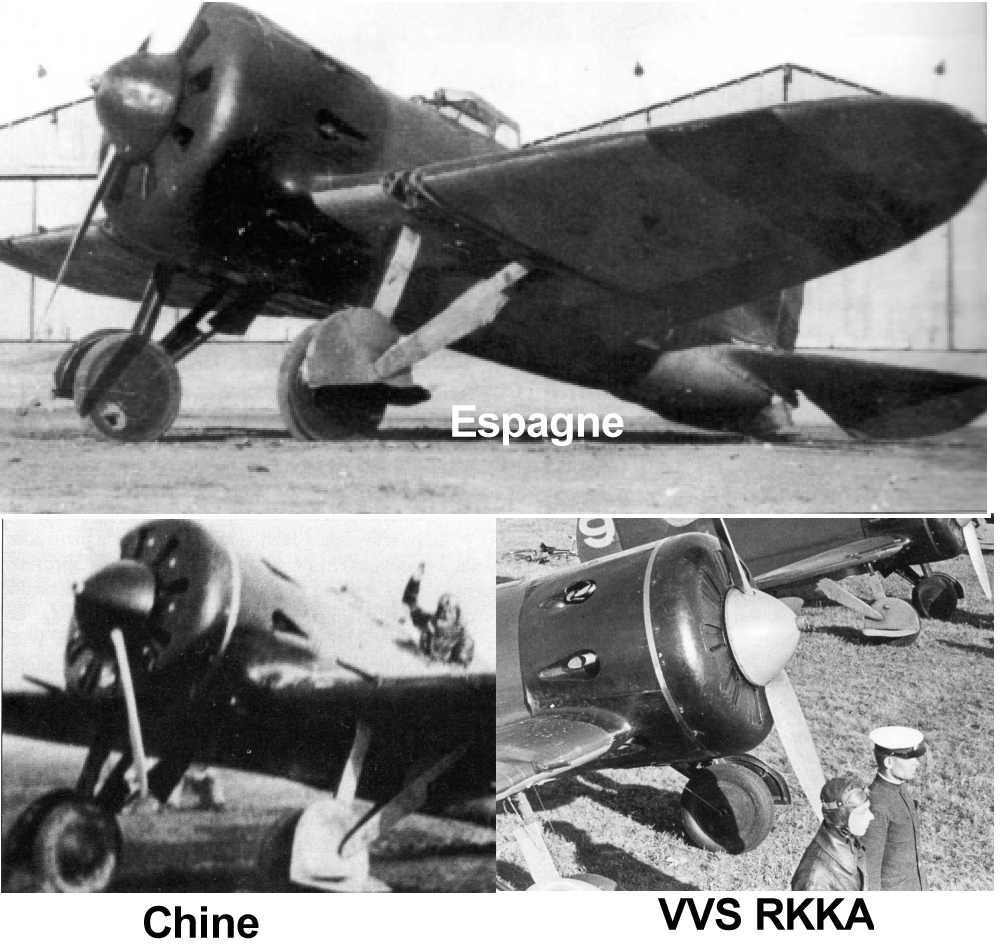
This is my interpretation of the aircraftr of the kapitan Sergey Tharkov, destroyed on November 13, 1936. Coded 1.

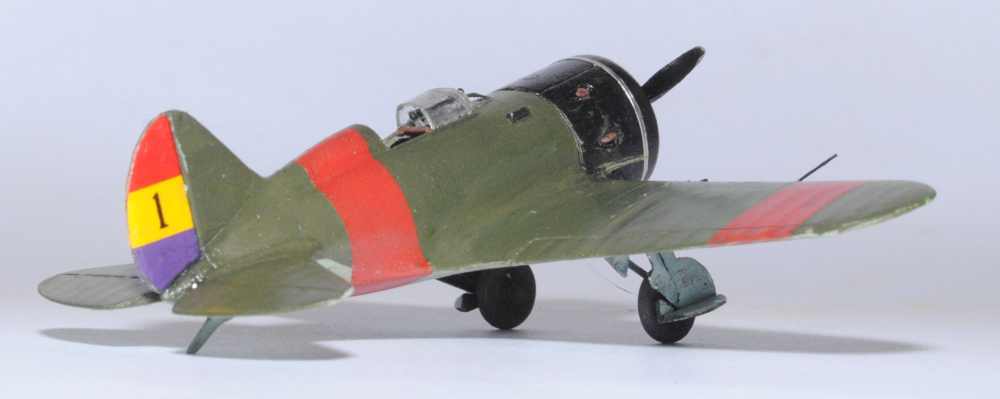

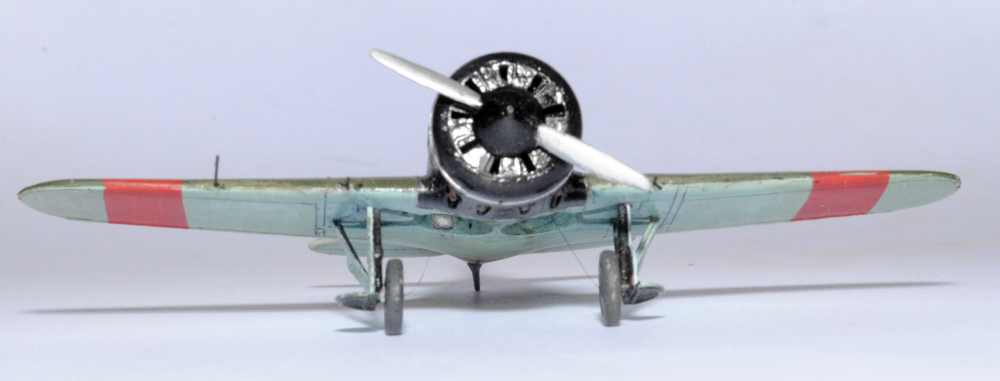

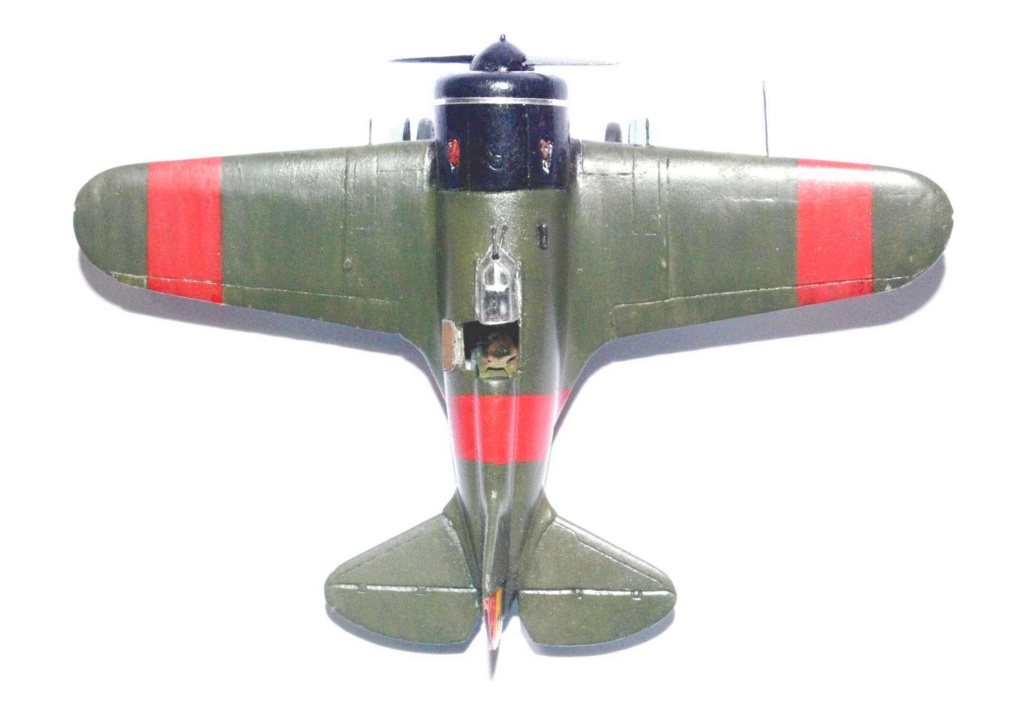

Regards
Bernard


